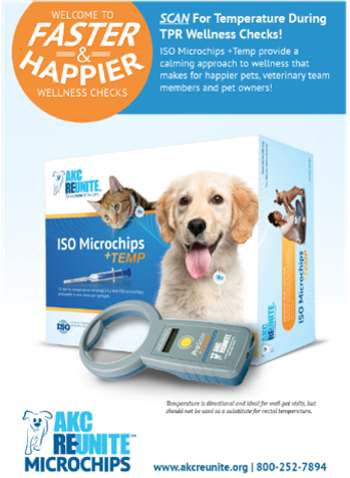
WVC 2017: Managing Cats with Upper Respiratory Infection - Bacterial Causes
At WVC 2017, Dr. Mike Lappin outlined best practices for diagnosing and treating bacterial upper respiratory infection in cats.
According to Mike Lappin, DVM, PhD, DACVIM, a professor in the Department of Clinical Sciences at Colorado State University, if you see cats in your practice, you’re likely also seeing a significant number of upper respiratory infections. This is most likely because most adopted cats or kittens come from shelters, and shelters are an ideal environment for the spread of infectious organisms. Dr. Lappin discussed bacterial respiratory infections in cats during a presentation at the 2017 Western Veterinary Conference in Las Vegas, Nevada.
Respiratory treatment guidelines from the International Society for Companion Animal Infectious Diseases (ISCAID) have been published in the Journal of Veterinary Internal Medicine and are also available at
Determining whether a patient has a bacterial component to its upper respiratory disease is difficult. The ISCAID guidelines state that all cats with signs of purulent to mucopurulent ocular discharge, nasal discharge, conjunctivitis, sneezing, and epistaxis may have a bacterial component to their disease. They also define acute infections as those lasting less than 10 days and chronic infections as those lasting longer than 10 days.
Dr. Lappin reminded attendees that secondary bacterial infections associated with feline herpesvirus or feline calicivirus are more common than primary bacterial infections. Secondary bacterial organisms often include Pasteurella multocida, Staphylococcus spp, Streptococcus spp, Escherichia coli, and anaerobes. Primary causes of bacterial infection include Bordetella bronchiseptica, Chlamydia felis, Mycoplasma spp, Streptococcus spp, and P. multocida.
For cats with signs of upper respiratory tract disease of less than 10 days’ duration, taking a careful history is an important part of evaluating potential causes, which can include vaccination, exposure to other cats, foreign bodies, contact with a shelter or veterinary hospital, exposure to dogs, and stress, among others. A thorough physical exam to check for lower respiratory issues and an FeLV/FIV test to check immune status is in order.
According to the ISCAID Working Group, there is limited benefit to performing cytology to ascertain a bacterial component. Culture and sensitivity are also not encouraged in acute cases because common bacterial pathogens are difficult to grow in standard cultures and a positive culture may be the result of commensal bacterial growth. In acute cases with no other identified problems, ISCAID recommends observation for 10 days because the cause may be an uncomplicated viral infection that should resolve on its own.
For suspected cases of secondary bacterial rhinitis, veterinarians are encouraged to do a workup if problems or clinical signs persist or worsen after 10 days. Dr. Lappin reminded the audience that rhinitis could be secondary to trauma, tooth problems, polyps, soft palate issues, cancer, foreign bodies, and viral-induced inflammation. For patients that present acutely and aren’t getting better with observation or antibiotics (in cases that presented with a fever), they should be worked up for these other causes. If the workup yields no other evidence of another disease in chronic (>10 days) cases, ISCAID recommends choosing an antibiotic based on culture and sensitivity. Antibiotics should be continued 1 week beyond the resolution of clinical signs.
In short, for uncomplicated mild upper respiratory tract disease, observe for 10 days. In acute cases with signs of fever, lethargy, anorexia, and mucopurulent discharge, it is appropriate to treat immediately with doxycycline or amoxicillin. Work up cases where clinical signs remain the same or worsen after 10 days.
Dr. Thompson is a small animal veterinarian, animal health executive, editor, and writer. She has held numerous positions with oversight responsibilities for editorial and business direction, including for Veterinary Learning Systems (publisher of Veterinary Technician and Compendium), Vetstreet.com, HealthyPet, and NAVC.
Reference:
- Lappin MR, Blondeau J, Boothe D, et al. Antimicrobial use guidelines for treatment of respiratory tract disease in dog and cats: Antimicrobial Guidelines Working Group of the International Society for Companion Animal Infectious Diseases. J Vet Intern Med. 2017;Feb 10. doi: 10.1111/jvim.14627. [Epub ahead of print].
Newsletter
From exam room tips to practice management insights, get trusted veterinary news delivered straight to your inbox—subscribe to dvm360.





